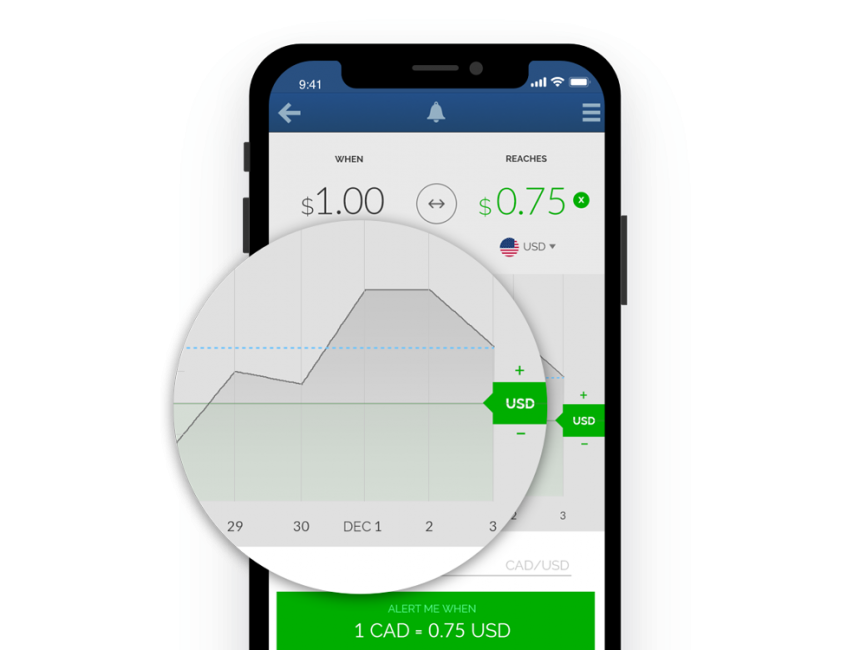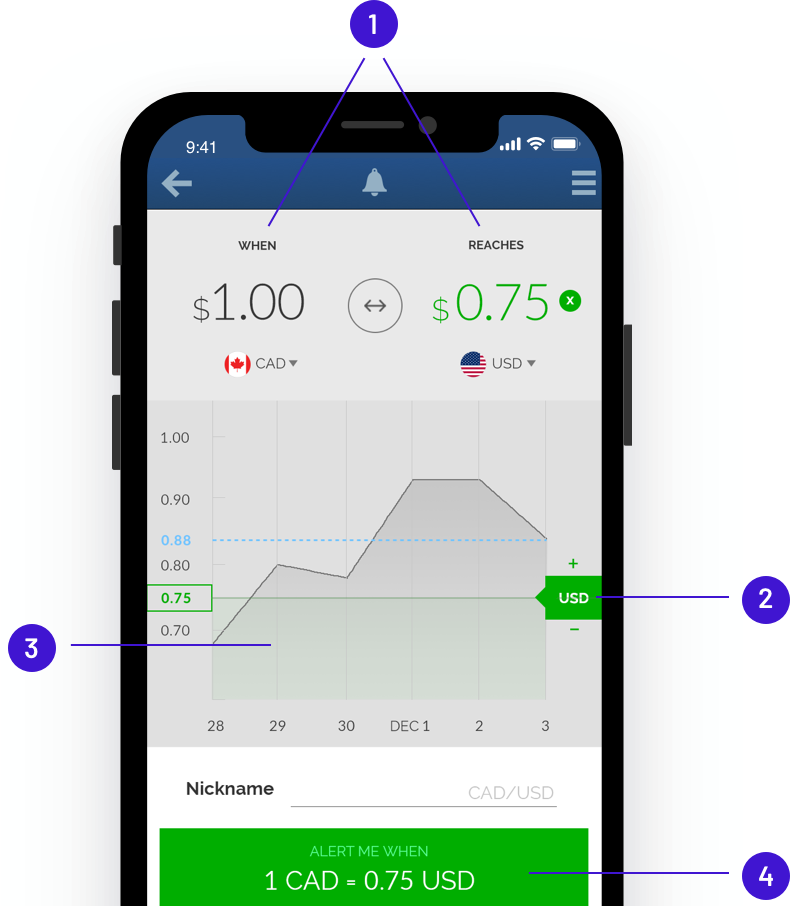User Research, UX/UI
XE Rate Alerts
A case study on the user research, design, and development of the Rate Alerts feature on the popular XE Currency app.

Challenge
XE Currency is a popular currency app that millions of users rely on everyday for reliable conversion rates. The Rate Alerts feature on the app allows users to set up an alert to inform them when their desired conversion rate has been reached. In order to get a better understanding of the user experience for this new feature, we needed to conduct a few usability tests.
User Research
An online service similar to usertesting.com was used to recruit users within specific demographics to test the app. These users were given a scenario and a set of tasks to complete on the app, while their actions and commentaries were recorded. These scenarios were set up to test if users understood how to set an alert for their desired rate, how to select the right currency, how to edit the currency, and what to do after they’ve set up an alert.
This exercise proved to be extremely insightful as it helped me validate my assumptions and revealed problem areas that were not obvious before. After reviewing each video, I collaborated with the development team on iterating the design and testing again.
Example Scenario:

Imagine you’re going to your friend’s wedding in Ireland in a few months, and you’d like to bring some cash with you as pocket money. You have a budget of $1000 USD to spend during your trip.
Please launch the XE app and follow the instructions. Remember to think out loud as you go through each step.
- Convert 1000 USD to Euros
- Looking at the result, would you consider this to be a good exchange rate?
- You decide that you’d like to wait for a better exchange rate. How would you set up a rate alert to notify when you when the rate becomes more desirable?
- While in Ireland, you realize things cost more than you had planned. You decide you’ll need another 500 EUR. Find out how much this will cost you in USD.
- You’ve returned home with 200 EUR leftover from the trip. Find out how much this is worth in USD.
- You decide the rate isn’t very good right now. Set a rate alert for a more desirable rate for converting Euros to USD.
Key Findings
- Currency conversion can be quite confusing and intimidating for many users
- As a general rule, industry terms like “mid-market rates” should be avoided. The preference is to use more common everyday verbiage instead.
- When setting a rate alert, it’s important to emphasize to users what is a good or bad rate.
- Don’t assume that a user will be familiar with a country’s currency code. People oftentimes travel to countries where they aren’t aware of the local currency.
Features

1. Common Everyday Language
Terminology can be confusing, especially for people who don’t do currency conversions on a daily basis. This is why it’s important to use language that can convey the concept in normal everyday words.
The common wording for making a currency conversion is “From” and “To”. By using the words “When” and “Reaches”, it helps users grasp the concept that this is a rate alert for a currency conversion at some point in the future.
2. Rate Slider
In addition to having a numberpad to allow users to adjust their rates, a slider was added to make this process even quicker and more intuitive. This way, if users wanted a more precise rate, they could continue to enter it in the numberpad. Otherwise, the slider would allow them to make quick adjustments by simply sliding up and down.
3. Useful Visuals
The existing design had a very technical vibe with a lot of detail. This made users feel as though the app was meant for “experts”. By simplifying the design and putting in helpful visuals such as the chart, users were able to get a better understanding of their conversion rate in context.
4. Clear Call To Action
When dealing with money and currency, users need to feel confident in their actions. When users have inputted their desired conversion rate, the green button clearly describes what will happen when they click the button instead of a generic “Done”.
Outcome
After several weeks of testing and collaborating with the development team on iterating the design, there were significant improvements made. I was able to gain invaluable insight into the way people perceive and process currency conversions, and used this to better inform my designs.